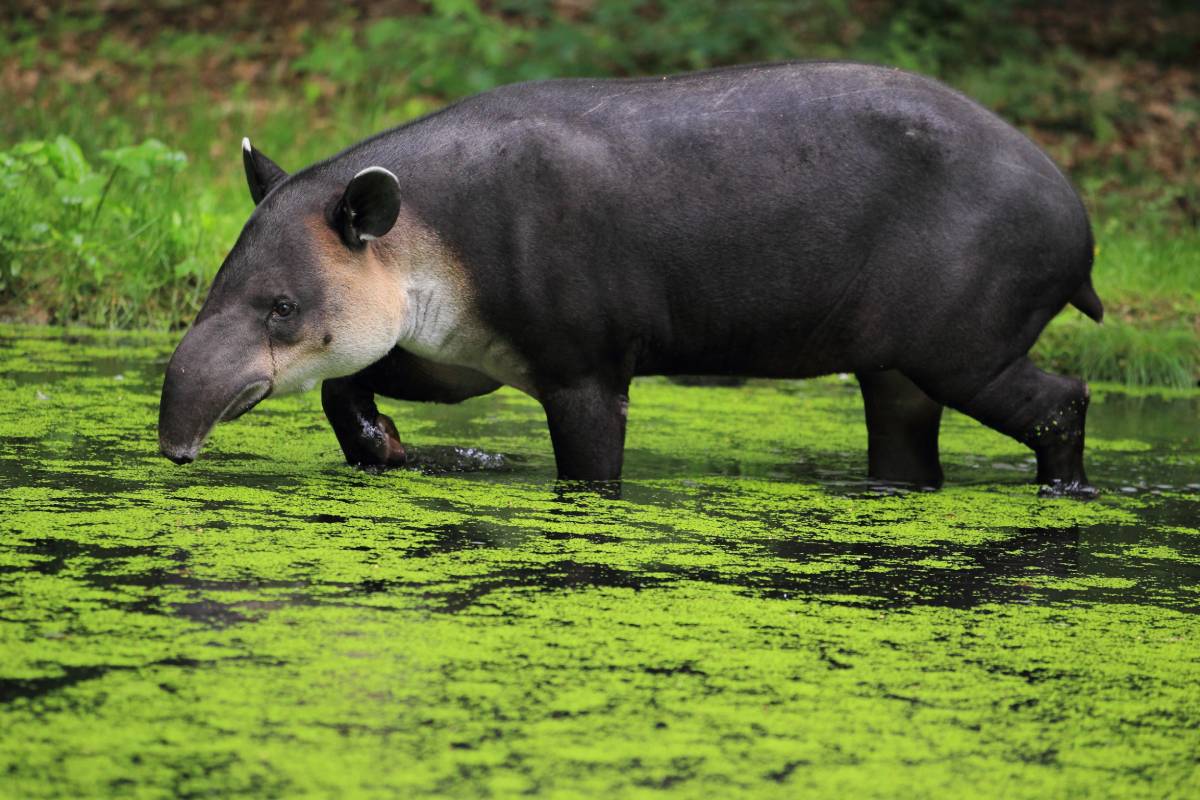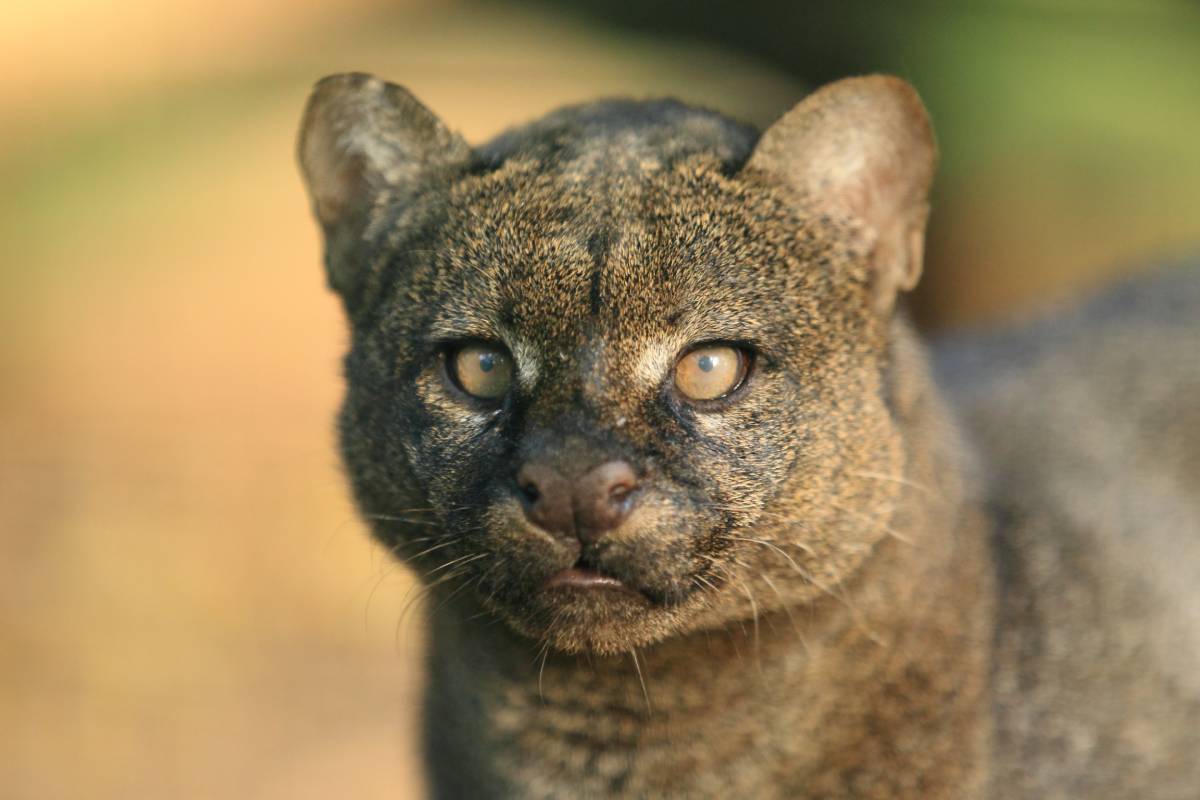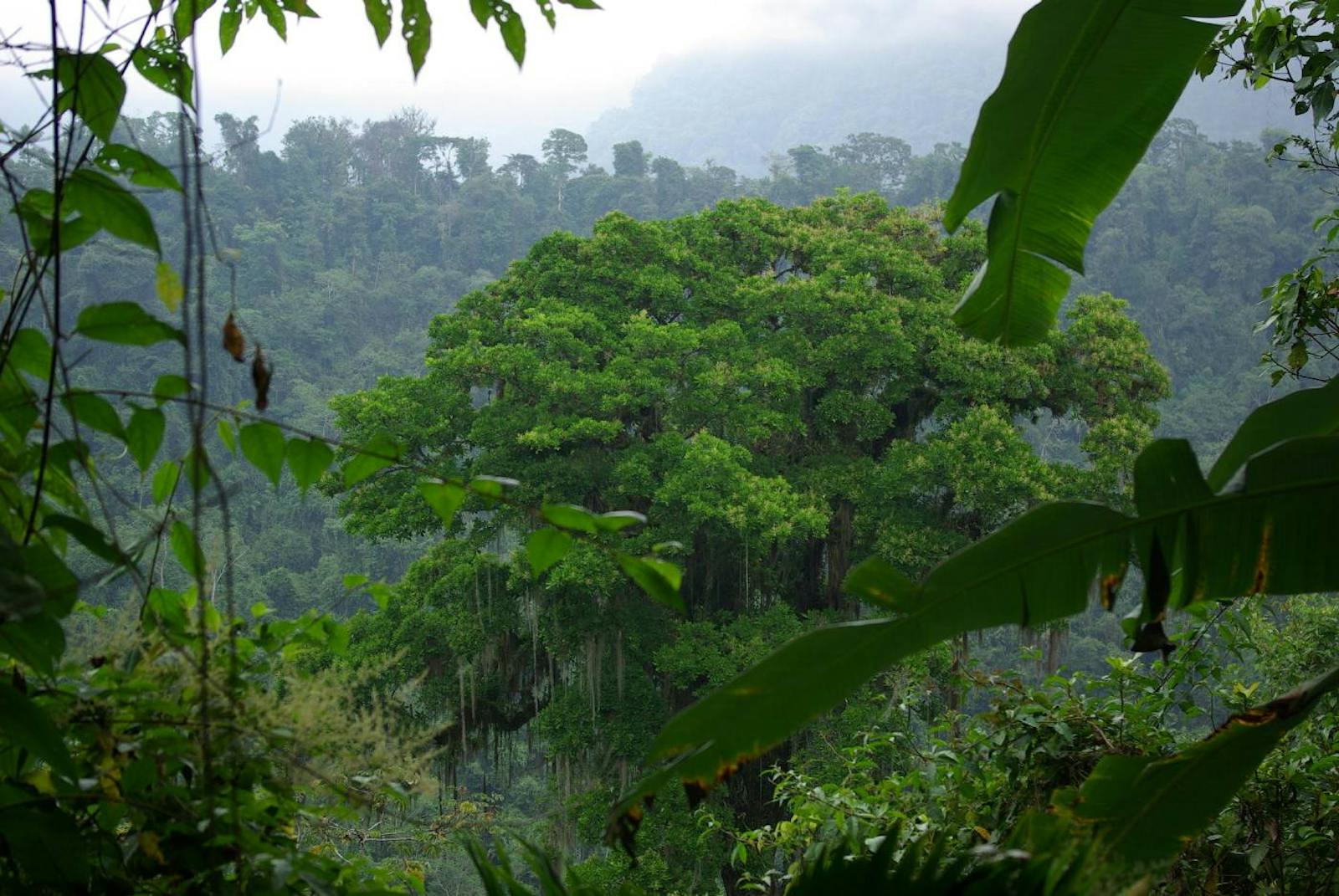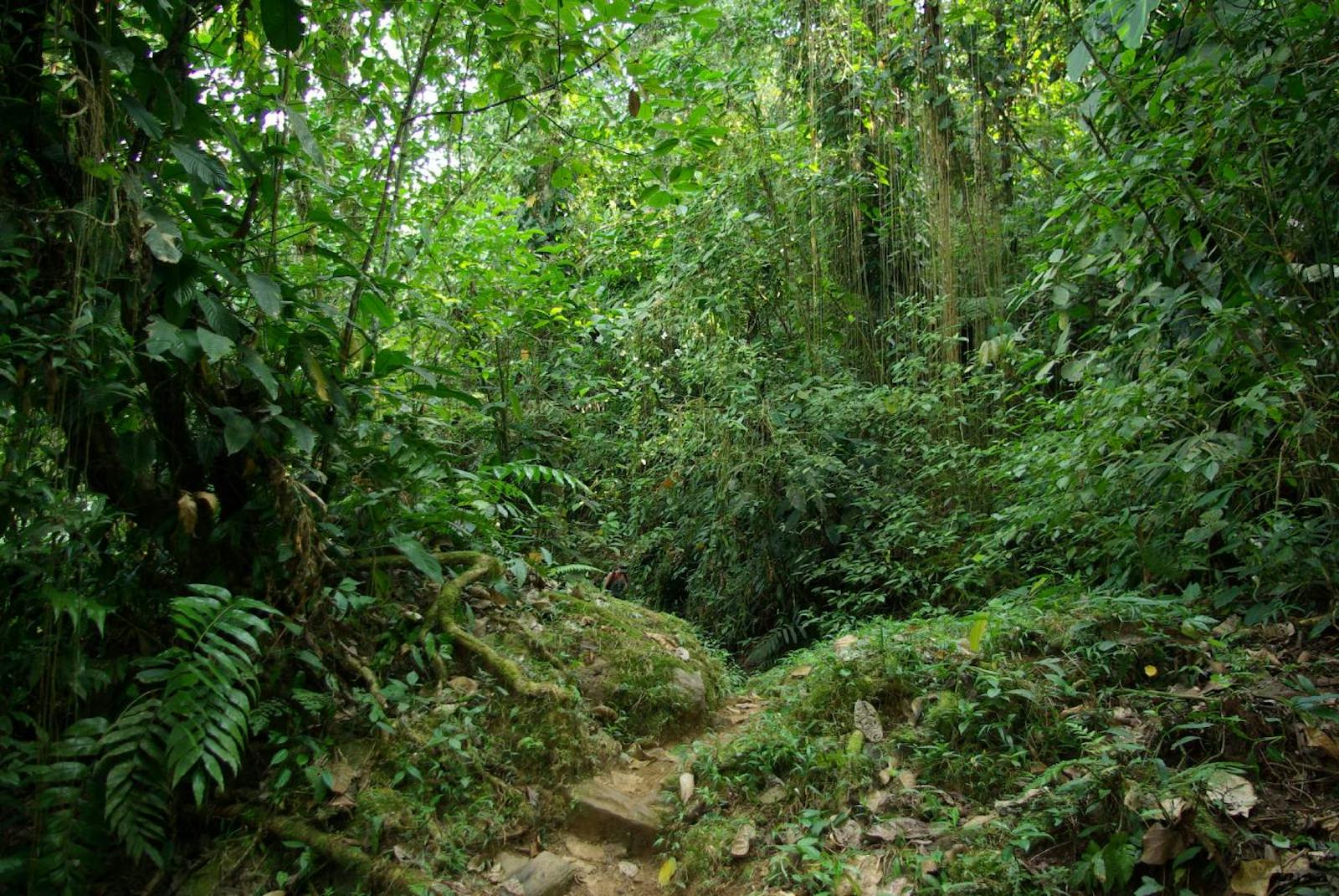Sinú Valley Dry Forests
The ecoregion’s land area is provided in units of 1,000 hectares. The conservation target is the Global Safety Net (GSN1) area for the given ecoregion. The protection level indicates the percentage of the GSN goal that is currently protected on a scale of 0-10. N/A means data is not available at this time.
Bioregion: Venezuelan Coast (NT23)
Realm: Southern America
Ecoregion Size (1000 ha):
2,504
Ecoregion ID:
546
Conservation Target:
16%
Protection Level:
7
States: Colombia
The endangered Baird’s tapir is the largest native land mammal that can be found in Central America, stretching into Colombia even into the upper regions of the Sinú Valley Dry Forests where the vulnerable lowland tapir is also found. This is the only known area where sympatric tapir species overlaps in distribution. The Biard’s tapir has a prehensile snout that can pick up objects just like an elephant with a small trunk, and strip leaves from branches as it forages. Tapirs are also excellent seed dispersals, which are important in the maintenance of overall forest health. In addition to tapir, this ecoregion is a crossroads for flora and fauna between the Americas.

The flagship species of the Sinú Valley Dry Forests is the Baird's tapir.
The soils of Sinú Valley is among the most fertile in Colombia, due to the annual floods of the Sinú River. Together with a seasonal climate, this region has developed a rich and endemic flora. Moist forests and the Caribbean Sea to the north surround this seasonal dry region. The rainfall is highly seasonal, with a dry period between January and March limiting yearly rainfall to 1,100–1,500 mm. Much of the dry forest has been converted into grasslands for cattle ranching. Dispersed throughout these grasslands are trees of calabash, kapok, monkey-pot, balsa, and pijio, with palms of grugru, Attalea butyracea, and Sabal mauritiiformis.
There are remnants of valuable timber species in the region once forming extensive forests including trees of mahogany, Spanish cedar, and guayacan. The valley is also known for the huge variety of native and introduced tropical fruits such as mango, soursop, papaya, cashew, tropical apricot, avocado, star apple, and sapodilla.
Situated at the northwestern extreme of the Andes, near the Darien-Panama bridge and between two major ecoregions—Chocó Wet Forests and Magdalena Medio Rainforests—the Sinú region is a bridge, a genetic corridor, a contact zone, and a center of endemism to the diverse fauna. The valley is the place of arrival of many migratory species of birds of prey, waterfowl, and songbirds during the northern winters. Savanna deer, puma, crab-eating racoon, and jaguarundi can be found throughout the open grasslands taking refuge in the dry forest patches.

A gazing jaguarundi
Species of special concern for this ecoregion are mahogany and the endemic Colombian ebony trees, as well as Cattleya aurea, a beautiful orchid threatened by over-collection for more than seventy years. Many more species of birds, reptiles, amphibians and arthropods are known to occur here, however, this is one of the least biologically known ecoregions of Colombia.
Due to deforestation for cattle ranching and agriculture, damming of the river for large hydroelectric projects, and desiccation of wetlands, few intact habitats remain in the low valley or in the drier ecosystems. In the mountains and upper Sinú, forest cover is still present, and a National Park and Indigenous territories assure its conservation.Wetlands and swamps in the upper Sinú region have historically remained relatively unaltered. However, a proposed new dam project poses a potential threat to their current state of intactness.
The recent construction of large dams for hydroelectric power, the Urrá I and II, will affect the seasonal floods of the valley that have been replenishing the wetlands and swamps with fresh water and nutrients, therefore impacting productivity of the ecosystem and the reproduction of fishery. The dams will also obstruct the "Subienda" or “up-going” of the fishes to spawn. An Indigenous group of Embera people, proper to the upper Sinú, have their ancestral territories here, and are being badly affected by the degradation of the environment by outsiders.
The priority conservation actions for the next decade are to: 1) mitigate current and future dam construction impacts with biodiversity offsets and other conservation strategies; 2) encourage natural resource management in agriculture and cattle practices; and 3) begin restoring areas surrounding and connecting remaining habitat fragments and blocks.
Citations
1. Constantino, E. 2019. Northern South America: Northern Colombia. https://www.worldwildlife.org/ecoregions/nt0229. Accessed March 13, 2019.
2. Hernández Camacho, J., G. A. Hurtado, Q. R. Ortiz, and Th. Walschburger. 1992c. Unidades biogeográficas de Colombia in G. Halffter (editor), La Diversidad Biológica de Iberoamérica. Xalapa, México: CYTED-D, Acta Zoológica Mexicana.
3. Gordon, B. Le Roy. 1983. El Sinú, Geografía Humana y Ecología. Bogotá, Colombia: Carlos Valencia Editores.





